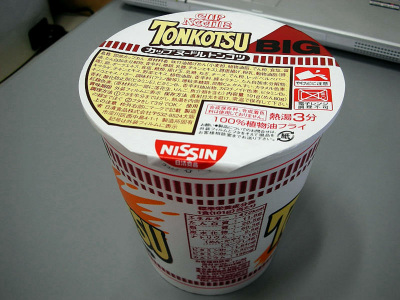I tried to eat 'Cup Noodle Seafood Noodle Bukomi Rice', which reproduces the 'Sin-Fu-no-Masa' in which the soup is cooked after eating ramen.

To commemorate the 35th anniversary of the launch of seafood noodles, ' Cup noodles seafood noodles Bukokimi rice ' that reproduces the ' inspiring goodness' that is embedded in the soup after eating ramen noodles is July 8, 2019. Appeared in. In order to check the actual place of the reappearance degree, I made 'bukkomi rice' with seafood noodles and compared the taste.
'Cup Noodle Seafood Noodle Bokkomi Rice' (released on July 8) | Nisshin Foods Group
This is 'Cup Noodle Seafood Noodle Bokkomi Rice'. Following the “Cup Noodle Bokkomi Rice ” that appeared in 2017, the popular “Cup Noodle Seafood Noodle” is transformed into a boiled rice.
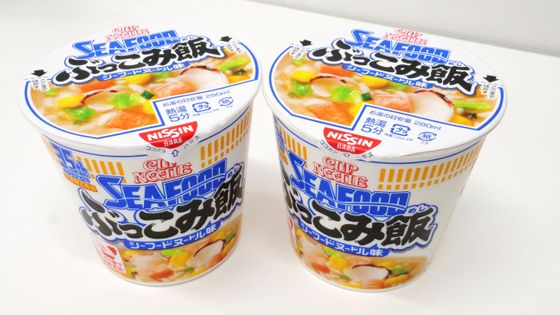
'Seafood Noodle Bokkomi Rice' is a product limited to the sale of seafood noodles for the 35th anniversary.
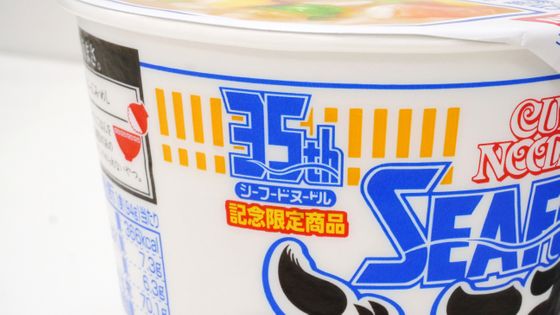
Of course the beginning of the raw material name is rice. It is followed by soup (pork fat, pork seasoning, salt, chicken seasoning, etc.), fish meat, paste products, seasoned eggs, cabbage, squid, green onion.
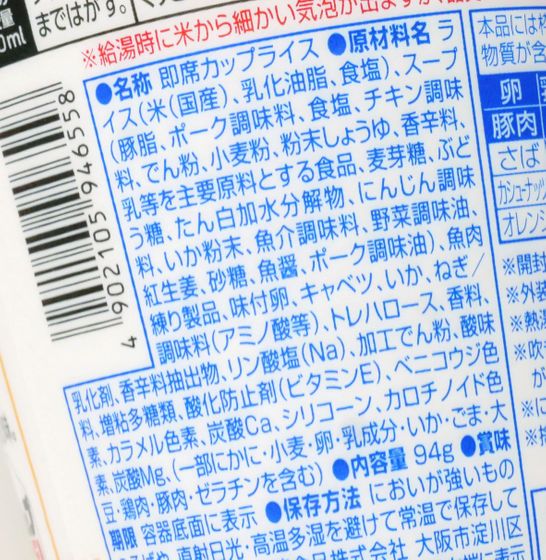
Calories are 366 kcal per 94 g of a meal.

When you open the lid, you can see squid and crab-flavored kamaboko and seasoned eggs.
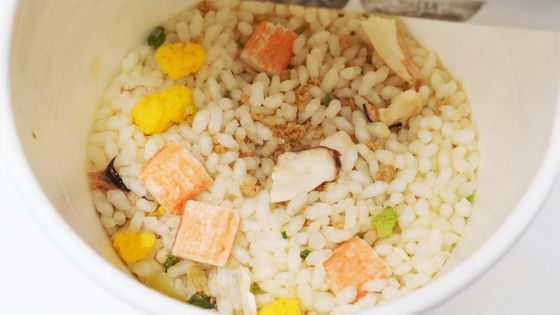
Slowly and evenly pour hot water to the inner line.
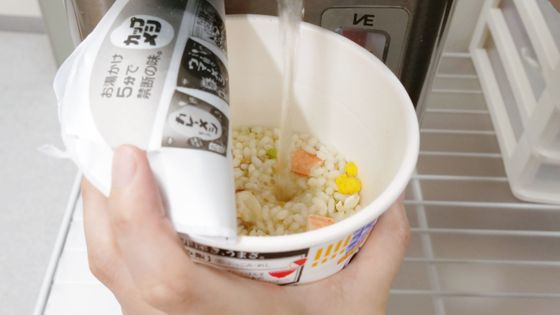
Wait 5 minutes longer than cup noodles.
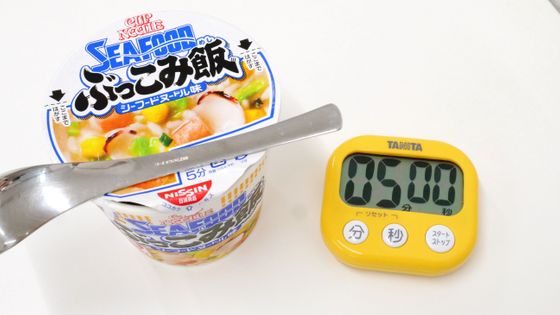
After 5 minutes, stir the contents of the cup and you're done.
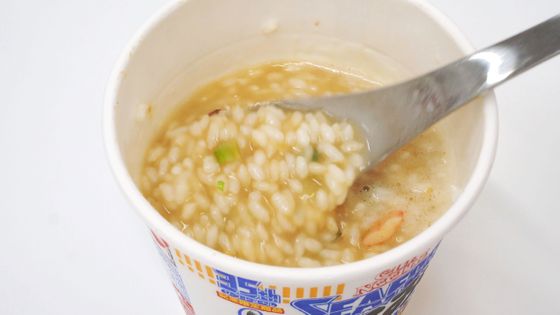
'Seafood Noodle Bokkomi Rice' is a very thick and thick soup. When you drink it, the taste and smell of seafood noodles spread.

When you try to combine soup with rice and ingredients, it tastes like seafood noodles, but with instant noodles, the 'junk feeling' that is more or less weakens. I felt it was a kinder taste than seafood noodles themselves.
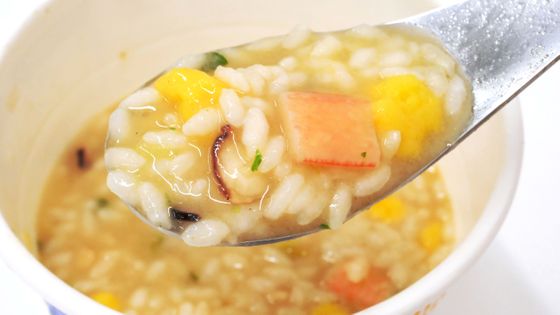
I actually tried what kind of difference it was to eat rice after eating seafood noodles. The package is “Seafood Noodle Bukokkomei” is thicker and shorter. 'Bukokkomi rice' is as much as 366 kcal with 94 g compared with 323 kcal with 75 g of seafood noodles, too.

Seafood noodles naturally use fried noodles is the biggest difference. However, while the raw material most commonly contained in seafood noodle soup is 'chicken extract', the raw material mostly contained in 'seafood noodle bukokkomi rice' soup is 'pork fat' From the above, you can see that the soup also has a difference.

Seafood noodles are completed in 3 minutes with hot water.
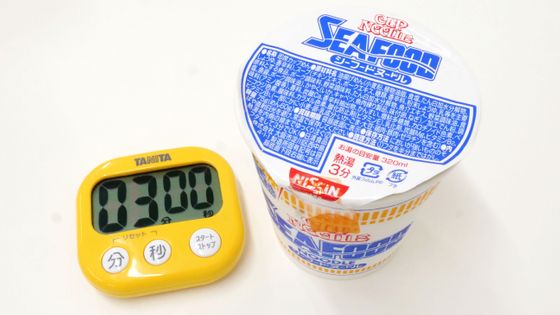
Seafood noodles had a firmer sense of saltiness and spice than 'bukkomi rice', and as a result, they also felt 'junk' strongly.
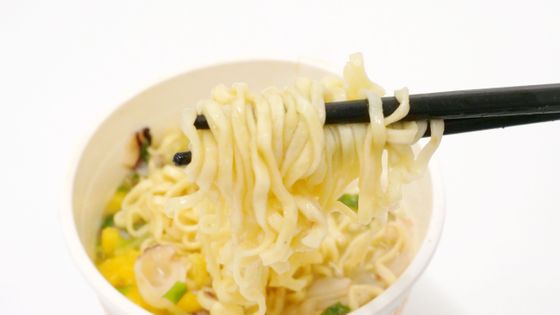
Cook your own after-meal soup and you'll be finished with your own home-made rice. 'Seafood Noodles Bukokimi Rice' has a thick soup and a poor texture, but the self-made Bukokimi Rice has a smooth flow of rice in the soup as if it were made with tea. The taste is similar, but if you think that you should have a 'junk feeling' when you eat instant noodles, you are better at home-made rice. On the other hand, if you want to eat seafood noodles, you can easily enjoy boiled rice, so please eat properly according to your taste.
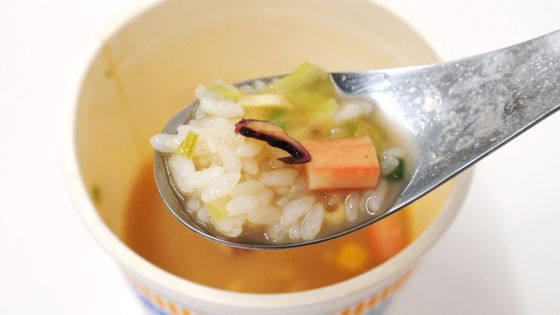
'Cup Noodle Seafood Noodle Bokkomi Rice' can be purchased at retail stores such as supermarkets and convenience stores all over Japan at a suggested retail price of 230 yen. At Amazon.co.jp, the six pieces were available for purchase for 1490 yen including tax.
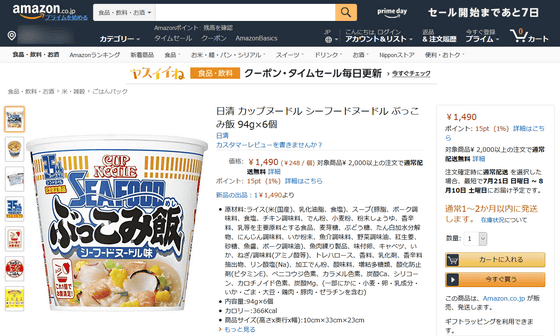
Related Posts:
in Tasting, Posted by darkhorse_log







